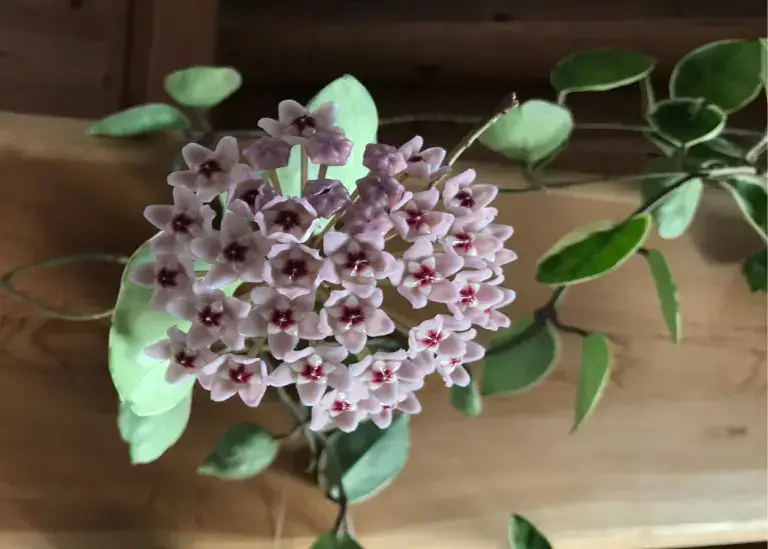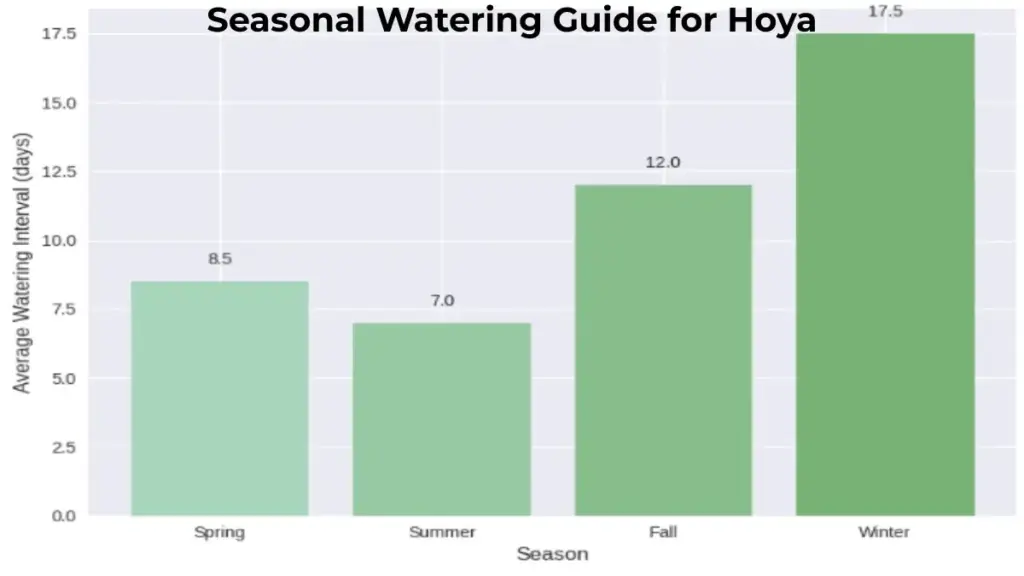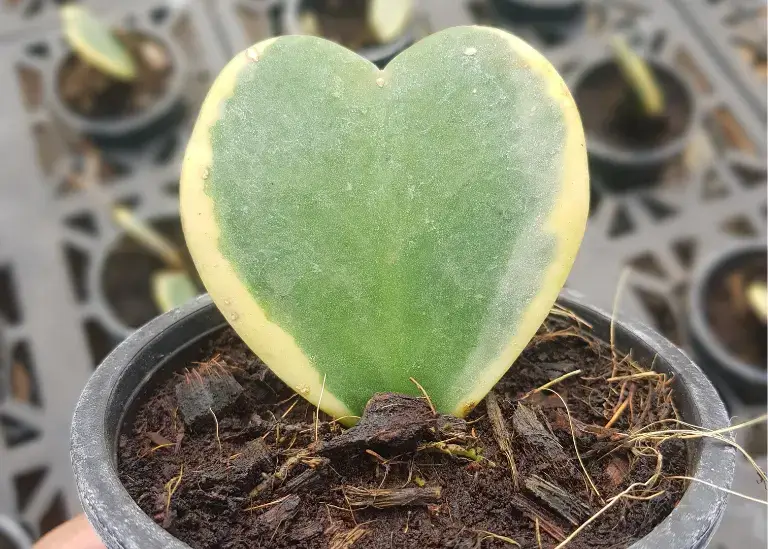Hoya Plant Care: Expert Tips for Thriving Wax Plants Indoors

If you’ve ever admired a houseplant with thick, glossy leaves and clusters of star-shaped blooms, chances are it was a hoya, also known as the wax plant. These plants are famously resilient and, with the right care, can live for decades.
Quick Answer: Hoya plant care is all about balance—bright but indirect light, infrequent deep watering, and a chunky, well-draining soil mix. With moderate humidity and patience, hoyas will reward you with steady growth and, eventually, fragrant blooms.
Hoya Plant Care Guide – An Overview
Learning how to care for a hoya plant is surprisingly straightforward, making them excellent choices for both novice and experienced plant parents. These easy care houseplant specimens are remarkably forgiving and adapt well to various indoor conditions when provided with basic requirements.
Quick Hoya Care Summary:
- Light: Bright indirect light (no direct sun)
- Water: When soil is dry (typically weekly in summer)
- Humidity: 50-60% preferred but adapts to average home humidity
- Temperature: 65-80°F (18-27°C)
- Soil: Well-draining, chunky potting mix
- Fertilizer: Monthly during spring and summer growing season
- Difficulty Level: Easy to care for with proper understanding
The key to successful hoya care lies in mimicking their natural epiphytic environment—providing excellent drainage, adequate humidity, and allowing the plant to dry between waterings.
Why Hoyas Win Over Plant Lovers
The first time I brought home a Hoya carnosa, I didn’t think much of it. Honestly, it looked like a simple trailing vine with waxy leaves. But a few years later, it burst into clusters of pink, starry flowers that filled my living room with a sweet vanilla scent. That moment hooked me—and it’s why so many plant lovers fall in love with hoyas.
What makes them special:
- Waxy, sculptural leaves in fascinating shapes (hearts, rippled ovals, even variegated patterns).
- Long-lasting blooms with scents ranging from honey to chocolate.
- Incredible adaptability, thriving indoors for decades with consistent care.
- Pet-friendly houseplant, see our hoya toxicity to cats article.

Types of Hoya Plants: Popular Hoya Varieties
Best Hoya Varieties for Beginners
If you’re new to hoya care, start with these forgiving varieties that adapt well to indoor conditions and provide spectacular results with basic care.
Top Beginner-Friendly Hoyas:
- Hoya carnosa: The classic wax plant with reliable growth and blooming
- Hoya pubicalyx: Features silvery-splashed leaves and pink flowers
- Hoya bella: A compact variety perfect for hanging displays
- Green hoya varieties: Offer consistent growth and easy maintenance
Specialty Hoya Varieties
Once you’ve mastered basic hoya plant care, explore these unique varieties that offer different leaf shapes, growth patterns, and flower characteristics.
Specialty Varieties:
- Hoya compacta: Known for its distinctive rope-like, curled foliage
- Hoya curtisii: Features small, heart-shaped leaves with silver markings
- Hoya kerrii: The well-loved Valentine’s hoya with its signature heart-shaped foliage
Each type of hoya has specific preferences, so research individual varieties to provide optimal care conditions.
Light: The Secret Behind Blooming Hoyas
Here’s something many new hoya owners don’t realize: lack of light is the #1 reason their plant won’t flower.
The RHS states that inadequate light can prevent hoyas from flowering. That’s why placement matters so much.
- Best spot: Bright, indirect light near an east or west window.
- Morning sun is fine; harsh midday rays can scorch leaves.
- If you live in a dim home, a full-spectrum LED grow light can make all the difference.
Personal note: My Hoya pubicalyx sulked for years without a single bloom. Once I moved it closer to a south-facing window (filtered with a sheer curtain), it flowered within months.
Watering: Avoiding the “Too Much Love” Trap
Hoyas store water in their leaves, which means they’re more drought-tolerant than many tropicals. But too much neglect—or too much love—can both cause problems.
- Water only when the top 2 inches of soil are dry.
- Give a thorough soak until water drains out the bottom.
- Always empty saucers to prevent root rot.
- In winter, cut back on frequency since growth slows.

I learned this the hard way. My first hoya developed yellow leaves from overwatering. After switching to a “soak and dry” routine, it bounced back within a month.
Soil: Why a Chunky Mix Is Essential
Think of hoyas as semi-epiphytes—they often grow on trees in nature rather than in dense soil. That means they crave air around their roots.
DIY hoya soil mix:
- 2 parts orchid bark
- 1 part perlite or pumice
- 1 part high-quality potting soil
This airy blend prevents soggy roots and mimics their natural habitat. According to a 2019 horticultural study, bark-based mixes prevent root rot in Hoyas by providing essential aeration, which suppresses pathogenic fungi like Pythium.
[📸 Suggested infographic: side-by-side comparison of dense vs. airy soil mixes.]
Humidity & Temperature: Giving Hoyas Their “Spa Day”
Most hoyas adapt fine to average household humidity, but they truly thrive when moisture levels rise.
- Target 50–60% humidity for lush growth.
- Pebble trays, plant grouping, or a humidifier work well.
- Keep temps between 65-80°F (18-27°C), avoiding drafts.
In my Portland home, winters get dry with the heater running. I noticed my Hoya kerrii’s leaves stayed plumper when I added a small desktop humidifier nearby.
Feeding: Encouraging Growth and Flowers
Hoyas are light feeders, but a little nutrition goes a long way.
- Use a balanced liquid fertilizer (10-10-10) every 4–6 weeks in spring and summer.
- To push blooms, switch to a bloom booster with more phosphorus.
- Stop fertilizing in winter when growth slows.
Esther E. McGinnis, a North Dakota State University Extension horticulture specialist, refutes erroneous and wasteful consumer myths, noting that balanced fertilization for tropical ornamentals is essential. She emphasizes that while phosphorus is a necessary nutrient, its overapplication does not enhance flowering in plants and can instead lead to yellowing leaves and an overall failure of the garden to thrive.

Pruning & Training: Shaping a Stunning Display
Hoyas can trail gracefully or climb dramatically with a little support.
- Use trellises, hoops, or hanging baskets to showcase vines.
- Pinch tips to encourage bushier growth.
- Don’t cut old flower spurs—they often rebloom in the same spot each year.
[📸 Suggested image: hoya on a trellis with vines trained in a circle.]
Propagation: Sharing the Joy
Once you fall in love with hoyas, it’s hard not to want more. Luckily, they propagate easily.
- Take a 4–6 inch cutting with at least 2 leaves.
- Root in water or directly in soil.
- Keep warm and humid until roots form.
Personal note: I usually start cuttings in water—it’s fun watching roots snake out. Once they’re about 2 inches long, I pot them in a chunky mix.
Advanced Hoya Care & Blooming Secrets
If you’ve mastered the basics and want to take your hoya care to the next level, the real magic lies in understanding how these plants grow in the wild. Hoyas are epiphytes, meaning they naturally climb and nestle into trees in Southeast Asia and Australia. Re-creating little pieces of that environment indoors is what makes the difference between a leafy plant and one that actually blooms.
Repotting: Less Is More
Hoyas prefer to stay a little root-bound, and frequent repotting can actually delay flowering.
- When to repot: Every 2–3 years, or when roots are circling the pot’s bottom.
- Best pots: Terracotta helps wick away excess moisture, while plastic retains water longer. Choose based on your watering style.
- Tip from experience: My Hoya compacta didn’t flower until its third year in the same pot. Once snug, it surprised me with a cascade of curly vines and clusters of blooms.
[📸 Suggested image: side-by-side photo of a root-bound vs. freshly repotted hoya.]
Seasonal Rest & Dormancy
In their native climate, hoyas slow down during cooler, drier months. Indoors, they’ll benefit from a similar rest period.
- Reduce watering in winter and stop fertilizing.
- Keep them cooler at night (around 60°F/15°C) if possible.
This “mini dormancy” signals the plant to store energy for spring growth and flowering.
Blooming Triggers: Unlocking the Flowers
Many plant parents wait years for their first hoya flowers, and the secret often comes down to conditions. According to a 2023 study in Horticultural Science & Biotechnology, bloom initiation in Hoyas is strongly linked to consistent light levels and slight root restriction.
- Light: 6+ hours of bright, indirect light daily.
- Stress factor: A slightly snug pot encourages blooming.
- Don’t cut spurs: Flower stalks (spurs) re-bloom yearly, so never trim them off after the flowers fade.
- Balanced feeding: Use a steady, diluted fertilizer through the growing season rather than high-phosphorus spikes.
[📊 Suggested infographic: “4 Key Bloom Triggers for Hoyas.”]
Training for Growth & Display
Advanced growers often shape hoyas into living art. Try:
- Wrapping vines around a hoop or trellis for circular displays.
- Allowing long trails to cascade from hanging baskets.
- Training up moss poles for a dramatic vertical look.
This not only saves space but also positions vines closer to light, which in turn encourages blooms.
Pro tip: Patience really is part of the process. Some hoyas bloom in their second year; others wait five. But when they finally release those clusters of star-shaped, honey-scented flowers, the reward feels extra special.
Troubleshooting Common Hoya Problems
Even tough plants like hoyas hit bumps sometimes. Here’s how to fix the most common issues:
- Yellow leaves → Likely overwatering. Check soil drainage.
- No flowers → Not enough light or plant too young.
- Wrinkled leaves → Underwatering or dry air.
- Pests (mealybugs, mites) → Treat with neem oil or insecticidal soap.
Don’t panic: Most problems are reversible with a quick adjustment.
[📸 Suggested infographic: quick-reference hoya problem-solution chart.]
Wrapping Up: Why Hoyas Are Worth the Wait
Caring for a hoya is an exercise in patience and reward. They won’t flower overnight, but when they finally do, the sight and scent of those blooms make the wait worthwhile.
Whether you’re growing a classic Hoya carnosa, a heart-shaped Hoya kerrii, or a splashy Hoya pubicalyx, the basics remain the same: give them bright light, a chunky soil mix, and a little patience.
If your hoya hasn’t bloomed yet, don’t give up—try adjusting its light or humidity and let nature do the rest.
FAQ’s
-
How often should I water a hoya indoors?
Every 1–2 weeks, depending on light and temperature. Always check soil first.
-
Can hoyas handle direct sunlight?
Yes, but only soft morning sun. Harsh midday light can scorch leaves.
-
How long until a hoya blooms?
Usually 2–5 years, depending on age, light, and conditions.
-
What’s the best soil for hoyas?
A chunky, airy mix with bark, perlite, and potting soil.
-
Are hoyas safe for pets?
They’re considered non-toxic, but nibbling can still cause mild stomach upset in pets.
